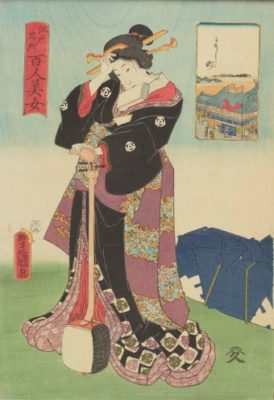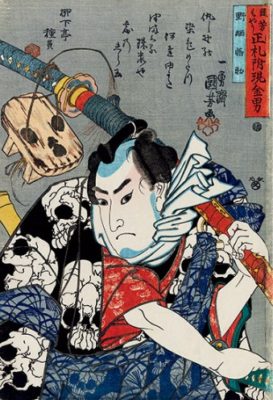Iki: Refined Style
The word “iki” began to be used to describe the refined dress and manner of Geisha during the Meireki era in the commercial harbors of Fukagawa. There, Geisha, both men and women, were enormously popular at gatherings of merchants or for entertaining business partners.

While Geisha are frequently depicted as extravant prostitutes in Western popular culture, true Geisha are professional entertainers and do not engage in paid sex with clientele. They entertain by reciting verse, playing musical instruments, or engaging in light conversation, even flirting to a playful extent; however, clients know that nothing more can be expected.
Iki shares concepts such as austerity, and existential beauty with the other Japanese aesthetics of wabi and sabi. Having emerged from the less isolated, more worldly merchant class, Iki may be in some ways a more contemporary expression of these indigenous Japanese values. The foundation of the more modern Iki aesthetic is more style that subject matter. . . it is unabashed, and completely lacking in detrimental self-consciousness. As a style, not generally tied to a specific form, Iki can be at once simple and sophisticated, ephemeral or straightforward, measured or audacious, smart or romantic – a study in contradictions.

In The Structure of “Iki” by Kuki Shūzō (1888–1941), Kuki adds “brave composure” and “resignation” to his description of the Iki aesthetic. With respect to the seductive or coquetry basis of Iki from it’s Geisha origins, he writes the goal of Iki is, “to maintain a dualistic relationship, protecting the possibility as possibility”. Perhaps the most optimistic of the Japanese aesthetics, and while consistent with wabi and sabi aesthetics mentioned above, Iki appears to go a bit further, to intimate the flip-side of impermanence as the consideration of just what might be possible.
Come Visit Art De Tama Fine Art!
Japanese artist in the United States. Tamao Nakayama was born and raised in Tokyo, Japan, and moved to the U.S. when she was 25 years old. She is still deeply influenced by the Japanese aesthetic, and the belief that ‘less is more’. She is a minimalist abstract artist. She paints and sculpts.

Pingback: Japanese Aesthetics - A Recap